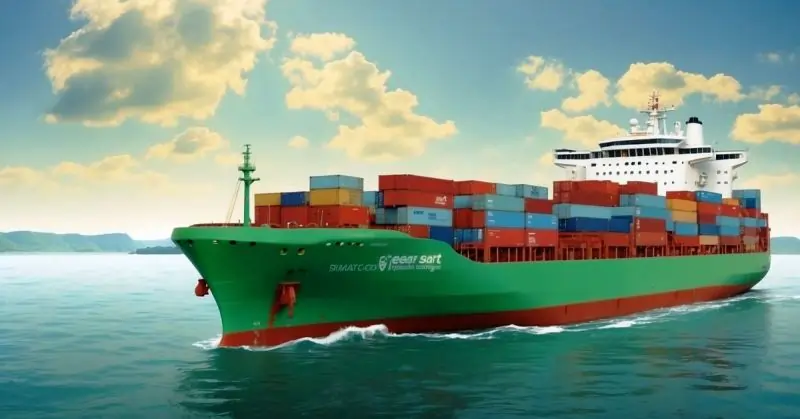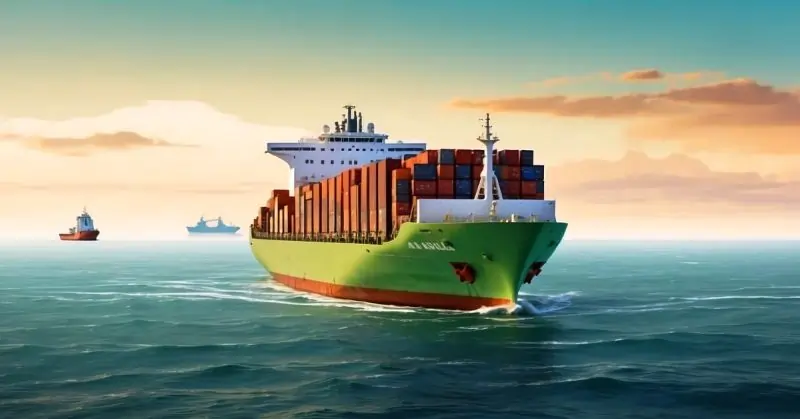Methanol Alternative Fuel in Shipping
Hey there! Did you know the shipping industry is like the giant conveyor belt of our global marketplace? It moves mountains of goods across the sea every day. But, there’s a catch – it’s been riding on fossil fuels for ages, puffing out pollution and giving Mother Nature a hard time.
Now, imagine a cleaner, greener conveyor belt. That’s where methanol steps in, shining bright as a beacon of hope. This nifty alternative fuel is starting to make waves for all the right reasons. It’s like the shipping industry’s new best friend, promising to slash those nasty emissions and hug the environment a little tighter. But, switching gears isn’t a walk in the park. It means revamping ships, tweaking engines, and getting all the tech in tip-top shape. We’re diving deep into the world of methanol, exploring how it could turn ships into lean, green, cruising machines.
Sure, there are hurdles – nothing good comes easy, right? But with some smart moves and a bit of investment, methanol could be the hero the shipping lanes need, making our blue planet a bit greener. Let’s set sail on this journey and discover why methanol might just be the future fuel of the high seas.
Green Seas: Shipping’s Environmental Voyage

Ever wondered how all those goodies from around the world land on our doorsteps? Well, thank the global shipping sector, the unsung hero of international trade. It should come as no surprise that maritime trade forms the foundation of the world economy, given that Mother Earth is more blue than green. Consider this: since 70% of our globe is submerged under water, ships are the preferred means of transporting cargo across oceans.They might take their sweet time, but when it comes to moving mountains of goods efficiently and affordably, ships are the champions.
But here’s the twist – this massive operation comes at a cost to our environment. Picture this: in just one year, the world’s shipping fleet guzzled down a whopping 298 million tonnes of fuel. That’s a lot of fuel! And with it, a hefty bill of CO2, Nitrous Oxides (NOx), particulates, Sulphur Oxides (SOx), and other greenhouse gases sent sky-high. It’s like throwing a party for pollution.
Enter the International Maritime Organization (IMO), wearing the cape of environmental regulations. They’ve set limits on those nasty SOx and NOx emissions and put a cap on fuel sulphur content. They’ve even marked out special areas where ships have to play extra nice with the environment. The goal? To nudge shipowners toward cleaner, greener alternatives like methanol and biofuels.
Navigating these waters isn’t easy. With a buffet of options for different types of ships, from short sea sprinters to intercontinental cruisers, choosing the right eco-friendly fuel is like picking the healthiest dish at a fast-food joint – tricky but crucial. The end game? To slash CO2 emissions, meet the 2020 Global Sulphur Cap, and embrace NOx Emission Control Areas without turning the ship design world upside down.
So, as we sail into a future where cleaner seas are on the horizon, let’s tip our hats to the efforts making waves in reducing the environmental footprint of our global marketplace. It’s a journey worth watching, and every small step counts toward a greener, bluer planet.
From Fossil to Green: The Shipping Fuel Shift

The maritime and shipping industry is undergoing numerous changes. Due to these changes, there is currently heavy pressure to switch to cleaner, greener fuel types from the traditional, polluting ones. This transition is similar to trading in your old, gas-guzzling car for a brand-new, elegant electric vehicle. The International Maritime Organization (IMO) enforces ship cleanliness standards to protect the environment, analogous to a demanding teacher
In this big shift, biofuels are the new stars. They’re kind of like the renewable energy of the sea. Mixing biofuels with regular diesel lets ships run on a cleaner mix, kind of like a hybrid car. This is great because it doesn’t mean changing the whole engine, just tweaking it a bit.
We’re diving into this post to see which biofuels are the best for the shipping world. The IMO has a checklist to see if these new fuels make the grade, helping ships be kinder to the environment. We’ll look at how these biofuels stack up: Are they good enough? Can we afford them? And do they work well in ship engines without causing a fuss?
So, come on this journey with us as we explore how the shipping world is turning a new, greener leaf. It’s all about making the seas cleaner and the earth a bit happier, one ship at a time.
Switching to Methanol: A Green Fuel Revolution in Shipping
To comply with the International Maritime Organization (IMO) regulations, The shipping industries is forced to consider the methanol as a potential alternative fuel. You may question, why methanol? Well, it’s pretty straightforward. Methanol is like a breath of fresh air for diesel engines, helping significantly reduce nasty emissions. It’s a game-changer for both two-stroke and four-stroke marine engines, making it a seamless fit for the engines powering today’s vessels.
This dive into methanol isn’t just theory. Comparing it side by side with traditional diesel, methanol shows some clear advantages, not least its gentler impact on our planet. It’s like comparing an electric car to a gas-guzzler; methanol runs cleaner, reducing greenhouse gases and helping the ocean breathe easier. Plus, it’s practical. Case studies back this up, showing methanol isn’t just an alternative but could be the main event in marine fuel, aligning perfectly with IMO’s environmental goals.
What makes methanol even more appealing is its cost-effectiveness. It’s relatively cheap to produce, which could make shipowners’ ears perk up. So, as we navigate through MARPOL ANNEX VI regulations aiming for cleaner seas, methanol stands out not just as a viable option but as a beacon of hope for a greener, more sustainable shipping future. Let’s set sail towards this new horizon, where methanol powers our journey to cleaner oceans and clearer skies.
Statistical Overview of Alternative Fuel Adoption
The world of shipping is catching a green wave, and the numbers are here to prove it. According to the latest stats from DNV’s Alternative Fuels Insight platform, there’s been a real shift in the tides. Out of 1,281 ship orders placed in 2023, a whopping 298 were for ships ready to run on alternative fuels. That’s an 8% jump from just the year before! It’s clear that the maritime world is steering towards more eco-friendly seas, choosing sustainable fuel options over the old-school ones. This shift isn’t just good news for our planet; it’s a bright beacon for the future of shipping.
Methanol’s Dominance in New Orders
The race for cleaner ship fuels is heating up, and methanol is making a big wave! It recently took the lead in new ship orders, with a whopping 138 compared to LNG’s 130. This surge in interest shows that methanol is gaining serious momentum as a viable and accepted alternative fuel for the maritime industry. Buckle up, because the future of cleaner seas might just be fueled by methanol!
Ammonia: A Growing Player in Marine Fuel
Ammonia also emerged as a significant contender in 2023, with 11 vessel orders. Its growing presence in the maritime fuel mix points to broader industry efforts to diversify fuel sources and reduce reliance on traditional fossil fuels.
Decarbonization Drive and Industry Response
The shift towards cleaner fuels aligns with the maritime industry’s response to global calls for reduced greenhouse gas emissions. This movement gained momentum following the International Maritime Organization (IMO)’s stricter emission targets set in July 2023. Knut Ørbeck-Nilssen, CEO of Maritime at DNV, emphasized the industry’s commitment to a greener future, highlighting the importance of collaboration among stakeholders to ensure the availability of these alternative fuels.
Methanol’s Expanding Footprint in Vessel Types
In 2023, methanol-fueled ship orders (excluding methanol carriers) witnessed a significant jump from 35 in 2022 to 138. The majority of these orders were for containerships (106), followed by bulk carriers (13) and car carriers (10), indicating methanol’s versatility across different vessel types.
LNG’s Ongoing Relevance Despite a Dip in Orders
Although LNG experienced a reduction in orders (130 in 2023, down from 222 the previous year), it maintained a strong position, especially in new buildings. LNG’s role in the maritime energy transition was further underscored by its fleet surpassing 1,000 vessels (excluding LNG carriers) in 2023, with containerships, car carriers, and tankers leading in LNG orders.
Ammonia and Hydrogen’s Differing Trajectories
While 2023 saw the inaugural orders for ammonia-powered vessels, hydrogen lost some ground with a decrease in popularity, evidenced by only five orders. This varied response to different fuels showcases the dynamic nature of the maritime industry’s fuel transition.
Future Trends and Industry Outlook
Martin Wold, Principal Consultant in DNV’s Maritime Advisory business, remarked on the trend’s sustainability, particularly in container and car carrier segments. The industry’s direction in 2024 and beyond remains a focal point of interest, reflecting the ongoing evolution in maritime fuel choices
FAQ on Methanol Alternative Fuel in Shipping
Q: Why is Methanol considered a top alternative fuel in shipping for 2023?
A: Methanol is seen as top because it’s less polluting than traditional fuels and aligns with global environmental goals.
Q: Can current ships use C10H20O without major modifications?
A: Yes, most ships can use Methanol with minor adjustments to their fuel systems and engines.
Q: Is C10H20O widely available for use in the shipping industry?
A: As of 2023, Methanol is increasingly available globally due to growing production and infrastructure development.
Q: Are there environmental benefits to using C10H20O over traditional fuels?
A: Absolutely, Methanol reduces emissions of harmful gases, making it a cleaner, more eco-friendly option for shipping.
Blog Post Conclusion
Methanol is now the most popular option for cleaner shipping fuel in 2024. It is an excellent choice for ships because it is less damaging to the environment than conventional fuels. Better engines and fuel systems for methanol use have been created this year, and legislation to encourage its wider use is being prepared.
The wonderful thing about methanol is that it contributes to ship pollution reduction, which is in line with global environmental goals. Not only is it a long-term solution, but ships can continue to use it for a long period to meet their environmental requirements.
To put it briefly, this year’s greener shipping innovations are being driven by methanol. It’s a significant step toward clearer skies and oceans, demonstrating the shipping industry’s dedication to a
